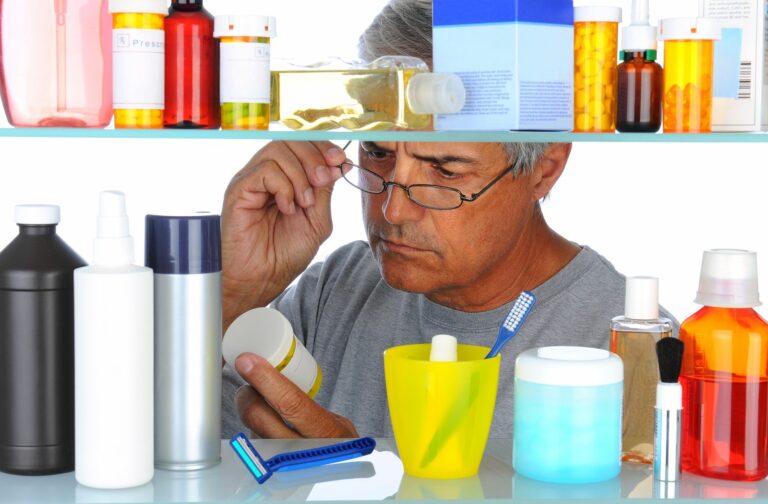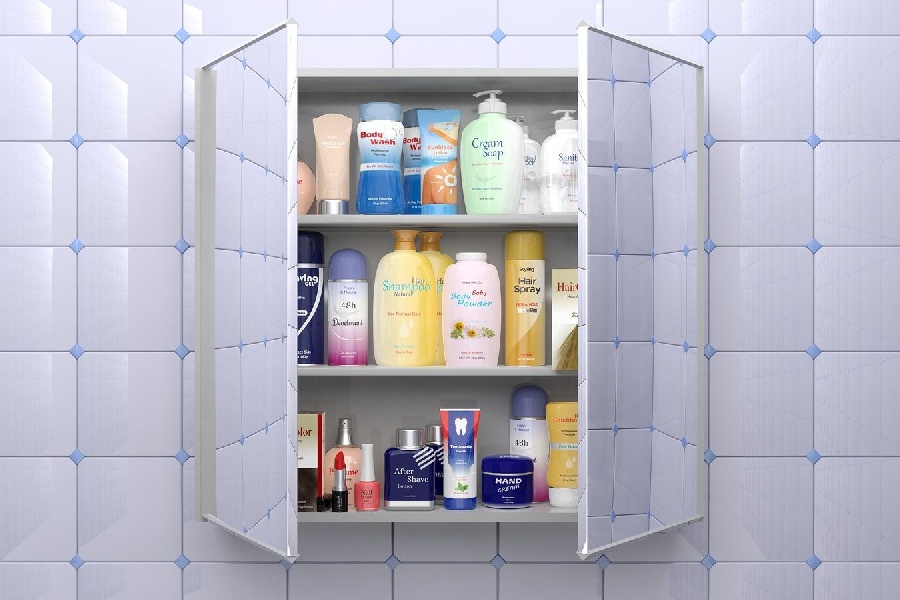
Time to Give Your Medicine Cabinet a Checkup?
How many people know exactly what is in their bathroom medicine cabinets? Perhaps some do, but probably not the majority. For most us, a peek inside the medicine cabinet may offer more than a couple surprises. The odds are we may find some old prescription bottles way beyond the expiration date as well as over-the-counter- medications and personal care products that have also expired or changed color due to lack of use. Clearly, it is probably a good idea to give a medicine cabinet a thorough inspection and cleaning out at least annually.
Surprisingly, the bathroom medicine cabinet is not the best location for many medications and health-related or personal care products. The fluctuations in temperature and high level of humidity in a bathroom can have a negative effect on many items, impacting potency, reducing effectiveness, and accelerating expiration. Items that are used up relatively quickly, like deodorant and toothpaste, are usually not around long enough for the bathroom environment to become problematic so it is a fine location for them. But, it is probably best to move some of other the items traditionally stored in the bathroom medicine cabinet for longer lengths of time to a cool dry place instead.
Here are some things to think about the next time you give your medicine cabinet a good “once-over.”
A few helpful tips...
- Check dates. Take a look at the expiration date of every item in your medicine cabinet and get rid of anything with a date that has come and gone. This includes everything from prescription medications, over-the-counter medications, vitamins, and herbal supplements to creams, lotions, and ointments. Even check the expiration date on that container of bandages. Most people mistakenly assume that adhesive bandages will last forever, but the materials they are made with can break down over time.
- Do not rely solely on expiration dates. The truth is that expiration dates are estimates. They are based on the amount of time it is expected to take before medications and other products will fail to be effective or perhaps even become toxic. A change in color, smell, or taste may also signify that a medication or other product should be discarded. Many healthcare professionals recommend following the “one year rule,” which means discarding products by one year after the container has been opened… even those with an extended expiration date. Seek out your personal physician’s philosophy on expiration dates.
- Test electric and/or battery operated devices on a regular basis. Make sure these items are in good working order and can be used safely. Parts and wiring can degrade over time. In addition, some older appliances may need to be upgraded to newer and more efficient models. Check out devices like thermometers, heating pads, blood pressure monitors, glucose monitors , massage therapy devices, and TENS (Transcutaneous Electrical Nerve Stimulation) units. If in doubt, your local pharmacist should be able to help you determine if a device is working correctly.
- Discard medications safely and appropriately. While some medications can simply be thrown out with the trash, others must be disposed of in specific ways. Some medications are dangerous to people and/or animals. Some are potentially harmful to the environment. These should not be added to waste landfills or flushed down toilets. Many pharmacies, doctors, and police departments help people dispose of medication in a safe manner. A lot of communities also have drug “take-back” programs. For detailed medication disposal guidelines, visit the U.S. Food and Drug Administration’s website at http://www.fda.gov/ForConsumers/ConsumerUpdates/ucm101653.htm#1.


Age Adds Flavor
We are not old, we are seasoned!
Don’t forget to visit us on FACEBOOK!
